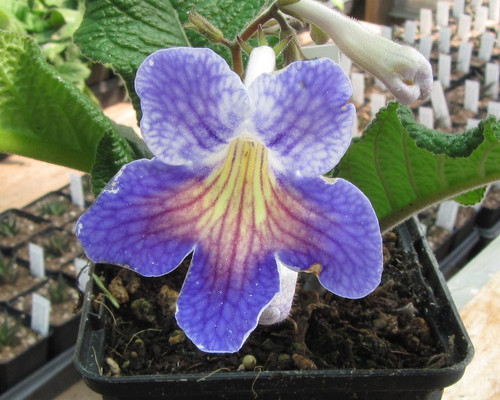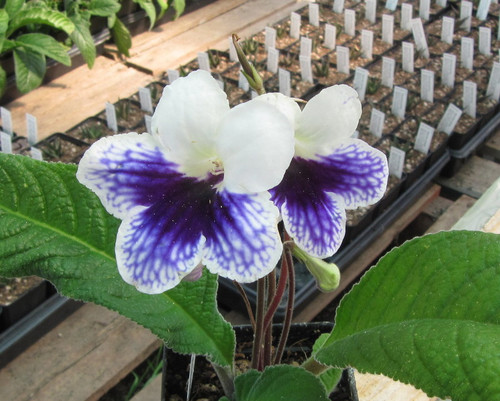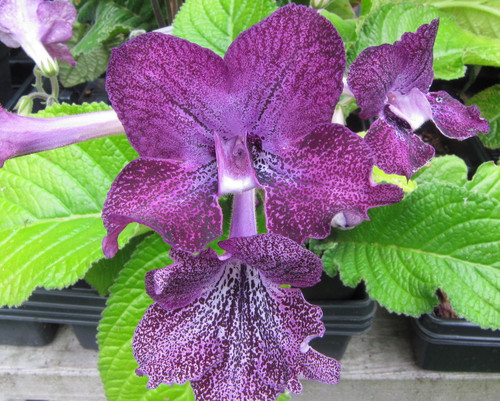Pot Size: 3.5"
Accepted Scientific Name: Streptocarpus hybrid 'Keigetsu'
Origin and Habitat:
Streptocarpus hybrids trace their origins to wild species native to South Africa and Madagascar, where they inhabit cool, humid valleys, rocky cliffs, and forest margins. These environments provide dappled shade, constant airflow, and moist but well-drained soils. Hybridization has broadened their adaptability, resulting in striking cultivars like 'Keigetsu', which was bred for its refined flower form and unique color contrasts. While it does not occur in the wild, it inherits resilience and growth patterns from its parent species, making it well-suited for cultivation indoors or in controlled greenhouse conditions.
Description:
Streptocarpus hybrid 'Keigetsu' is a compact perennial reaching about 8 to 12 inches in height and 10 to 14 inches in spread. Its leaves form a lush rosette of elongated, textured green foliage that provides a backdrop for its remarkable flowers. The blooms are trumpet-shaped with wide, lobed petals, displaying a delicate blend of lavender, violet, and creamy yellow tones towards the center with a dark purple throat that intensify their visual appeal. Flowering occurs over an extended season, with multiple stems carrying clusters of these striking blooms, making 'Keigetsu' a standout ornamental for indoor displays.
Cultivation:
Zone: Best suited for indoor growing, outdoors in USDA Zones 10–11.
Temperature: Ideal range is 15–25°C. Protect from prolonged heat above 30°C or chills below 10°C.
Growth Rate: Moderate, with consistent foliage growth and abundant blooms when well cared for.
Soil: Light, airy soil mix with pumice to ensure excellent drainage and aeration. Avoid dense soils.
Watering: Keep evenly moist, but allow the soil surface to dry slightly before rewatering. Avoid soggy conditions.
Fertilizing: Feed with a balanced liquid fertilizer every 2–3 weeks during active growth and flowering.
Light: Provide bright, indirect light. Avoid direct sun, which may scorch leaves and reduce blooming.
Pests and Diseases: May be susceptible to spider mites, aphids, mealybugs, and thrips. Overwatering increases the risk of root rot and fungal diseases. Maintain good air circulation to reduce issues.
Propagation:
Propagated easily by leaf cuttings or by division of mature plants. Leaf sections placed in a moist, well-draining medium will generate new plantlets, while dividing established rosettes provides quicker propagation results.







